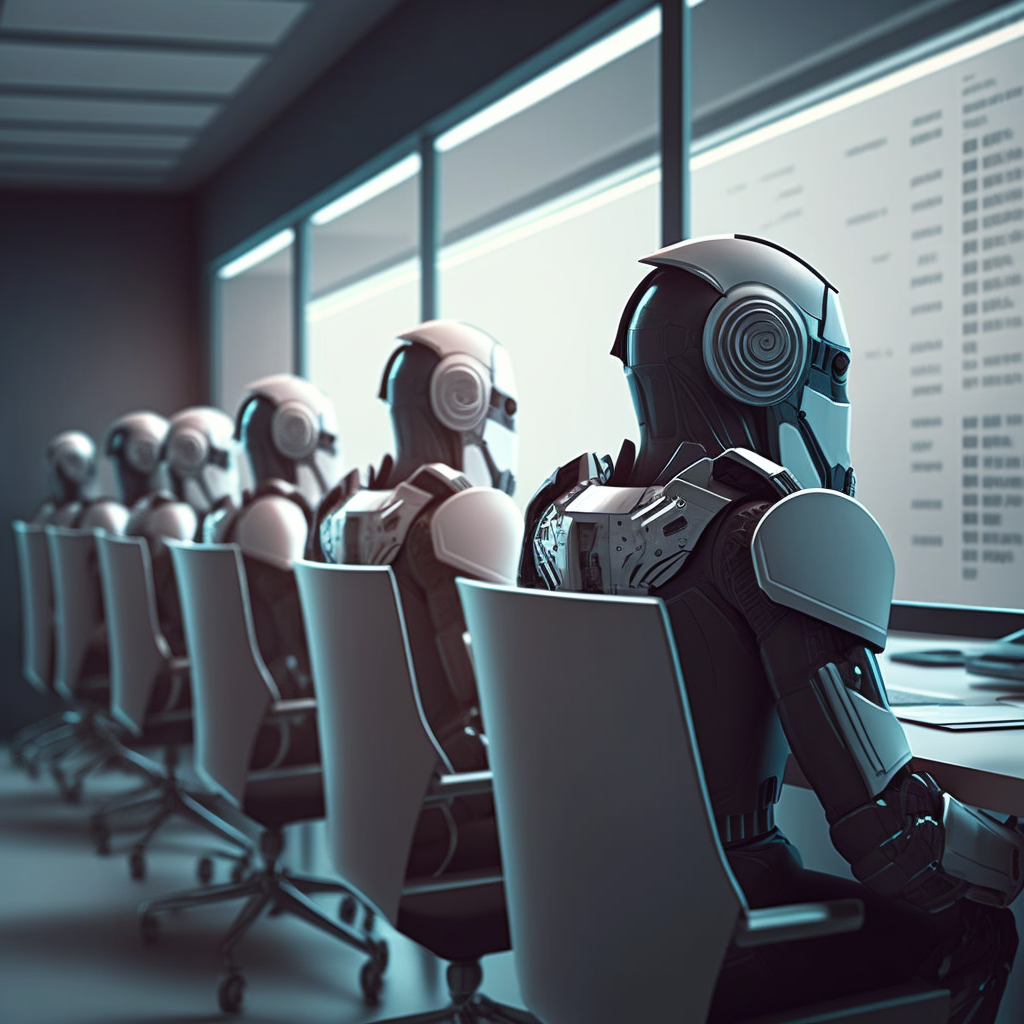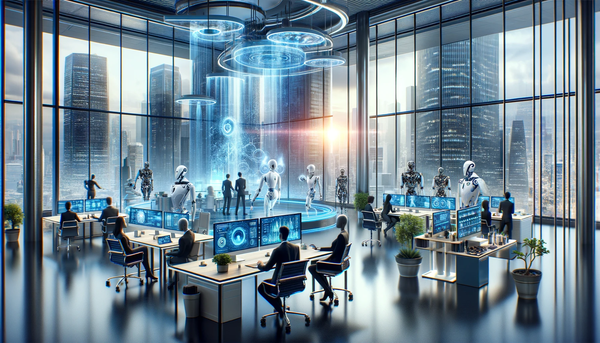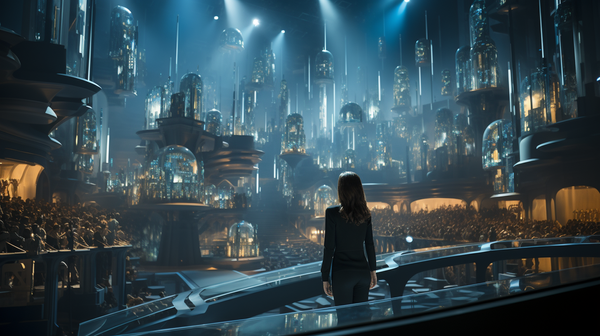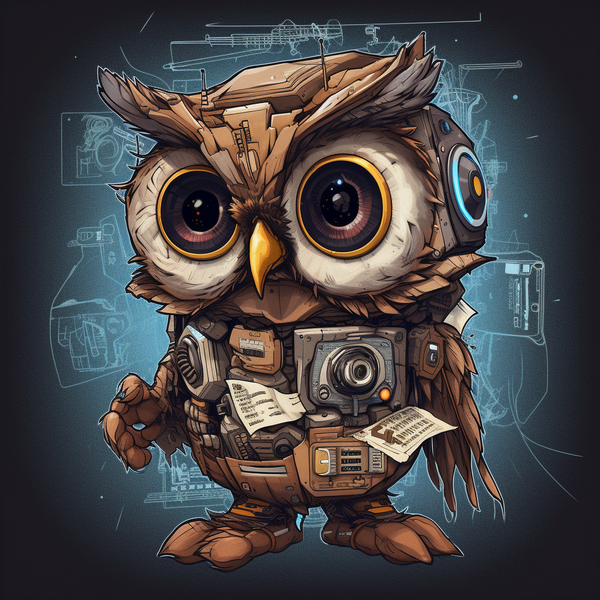In late 2022, OpenAI released the public research version of ChatGPT, its artificial intelligence system trained on human feedback. Since then, AI tools have flooded the market -- and savvy professionals are learning how to partner with AI to perform tasks that are time-consuming, monotonous, or low-value.
Here's how creative AI is already revolutionizing knowledge work, and where things are going.
Wait - What Is Artificial Intelligence? What is ChatGPT?
Artificial intelligence (AI) is a broad term that refers to computer systems designed to learn and think like humans. AI can be used to automate tasks such as sorting through data, making decisions, predicting outcomes, and understanding language. AI-powered tools are already being used in a wide range of industries, from healthcare to finance.
ChatGPT is a conversational AI interface currently offered as a research preview by OpenAI. With ChatGPT, users can ask questions and receive natural language answers that are tailored to their individual needs. ChatGPT can also be used in combination with other AI tools such as natural language processing (NLP) or machine learning (ML) to further automate processes or provide more accurate solutions.
A Virtual Assistant for Everyone
Just a few years ago, artificial intelligence was the realm of skilled engineers and highly technically minded humans, and if you used it, you would still get nonsensical answers. Today, AI systems are far more approachable and receptive to human language.
You can use the ChatGPT interface or natural language processing tools like Addy to draft emails, email responses, and full email sequences. Browser extensions with machine learning, like HyperWrite, bring artificial intelligence into any website, accelerating applications, forms, and other interactions that usually require manual input.
Using artificial intelligence for basic everyday writing can augment almost everyone doing knowledge work because of how quickly you can generate useful results. At Ridiculously Efficient, we've been helping virtual assistants and teams learn how to partner with creative AI tools so that they're able to support their clients in a better, faster fashion.
Operations and administration teams are the backbone of most companies, and yet these workers are historically the most overburdened with low-level tasks that an AI program can do in seconds. Why not free up these team members for other forms of value creation, like building relationships or facilitating live experiences?
Streamlined Collaboration With Artificial Intelligence
AI is also being used to streamline collaboration between teams. ChatGPT and OpenAI's GPT-3 are both being used to automate the generation of documents, such as legal contracts, job descriptions, and project briefs. This saves time on back-and-forths between team members and reduces the amount of manual work required.
AI can also improve communication between team members by automating mundane tasks like scheduling meetings or sending reminders. AI chatbots are being used as an alternative to a company's knowledgebase to help colleagues find answers more quickly and efficiently. And a customer-facing chatbot could answer basic questions about a company’s products or services without the need for a human customer service representative.
AI Research, Data Analysis & Insights
Artificial intelligence is also being used to generate insights from data sets too large for humans to process quickly. By partnering with machine learning systems, individuals and teams can quickly analyze huge amounts of data and provide actionable insights for decisionmakers.
For example, human resources departments can use deep learning tools to analyze employee sentiment data from surveys and other sources so that they can quickly identify areas of improvement in the workplace, or spot the best potential hires from a stack of applicants.
Marketing teams can use artificial intelligence to process data from email campaigns or analyze customer feedback from social media posts and surveys. These gems can be used to personalize future campaigns for even greater effectiveness, faster testing and iteration, and ideas for other programs or offerings the brand could deploy.
Automated Design & Content Creation
Finally, creative AI tools are being used for automated design and content creation tasks that would otherwise require careful, detailed manual labor by humans. For example, ChatGPT can generate entire press releases or website copy with just a few prompts from a user -- no need for designers or writers!
Similarly, AI tools like Midjourney, Stable Diffusion, and Adobe's Sensei are already being used by marketers and designers alike to create stunning visuals with minimal effort required on their part. Text-to-slideshow and text-to-video AI algorithms make it easy to create presentations and marketing assets that might have taken a regular team days or weeks.
At Ridiculously Efficient, we've been helping human experts, individuals, and teams learn how to leverage these creative AI tools so that they can save time and money while still creating great content that resonates with their audience.
What is the Future of AI Systems in Knowledge Work?
We're still in the early days of AI technologies, which in many ways feels like the Wild West. We don't know whether international governments will regulate AI, or when Big Tech companies like Alphabet, Amazon, and Apple will respond with their own large language models to compete with OpenAI's ChatGPT. And we don't know where or how all this training data we're generating will ultimately be used.
And yet there's hope. We also don't know the limits of AI's ability to solve problems. We don't know the upper limits of human intelligence when paired with artificial intelligence -- what we're capable of when we're able to delegate low-level work and solely focus our brainpower on real-world problem-solving.
As we march closer to artificial general intelligence, the next generations of AI systems, especially large language models, will be so advanced that it will feel like science fiction. We're months away from neural networks with speech recognition built in, so that every human conversation can effectively be input data for a creative AI application.
And because the human mind is wired to think linearly, not exponentially, those who aren't paying attention to AI right now have a big chance of getting left behind.
AI Applications in Robotics
Robotics is a major application of artificial intelligence. Right now, robots are being used in various industries, including manufacturing, healthcare, and agriculture to automate processes and reduce costs.
Robots can be programmed with AI algorithms to perform complex tasks with greater accuracy and speed than humans. For example, robots are being used in the manufacturing industry to create complex products such as cars and electronics. In healthcare, robots can assist surgeons in performing precision operations that require great dexterity and accuracy.
In agriculture, robots are being used to monitor crops for pests or diseases, as well as to automate the harvesting process. In addition, AI-powered robots are also being used in search and rescue missions due to their ability to navigate difficult terrain better than humans.
Machine intelligence combined with human intelligence is a truly next-level workforce. Robots with computer vision and specially trained AI systems can already solve problems out in the field -- it's only a matter of time before they enter modern office buildings as security guards, janitors, lobby staff, and receptionists.
As artificial intelligence continues to improve, it will become increasingly capable of tackling more complex tasks and providing insights that would otherwise require human intervention or interpretation. This will allow organizations to automate mundane tasks, collect user feedback more frequently, innovate faster, and free up their staff to focus on more important, value-adding activities.
At Ridiculously Efficient, we're monitoring the influx of innovation and interpreting it so you can actually start using it. Subscribe to Ridiculously Efficient for even more ideas on how creative AI can revolutionize the way you work, play, and live.










Member discussion